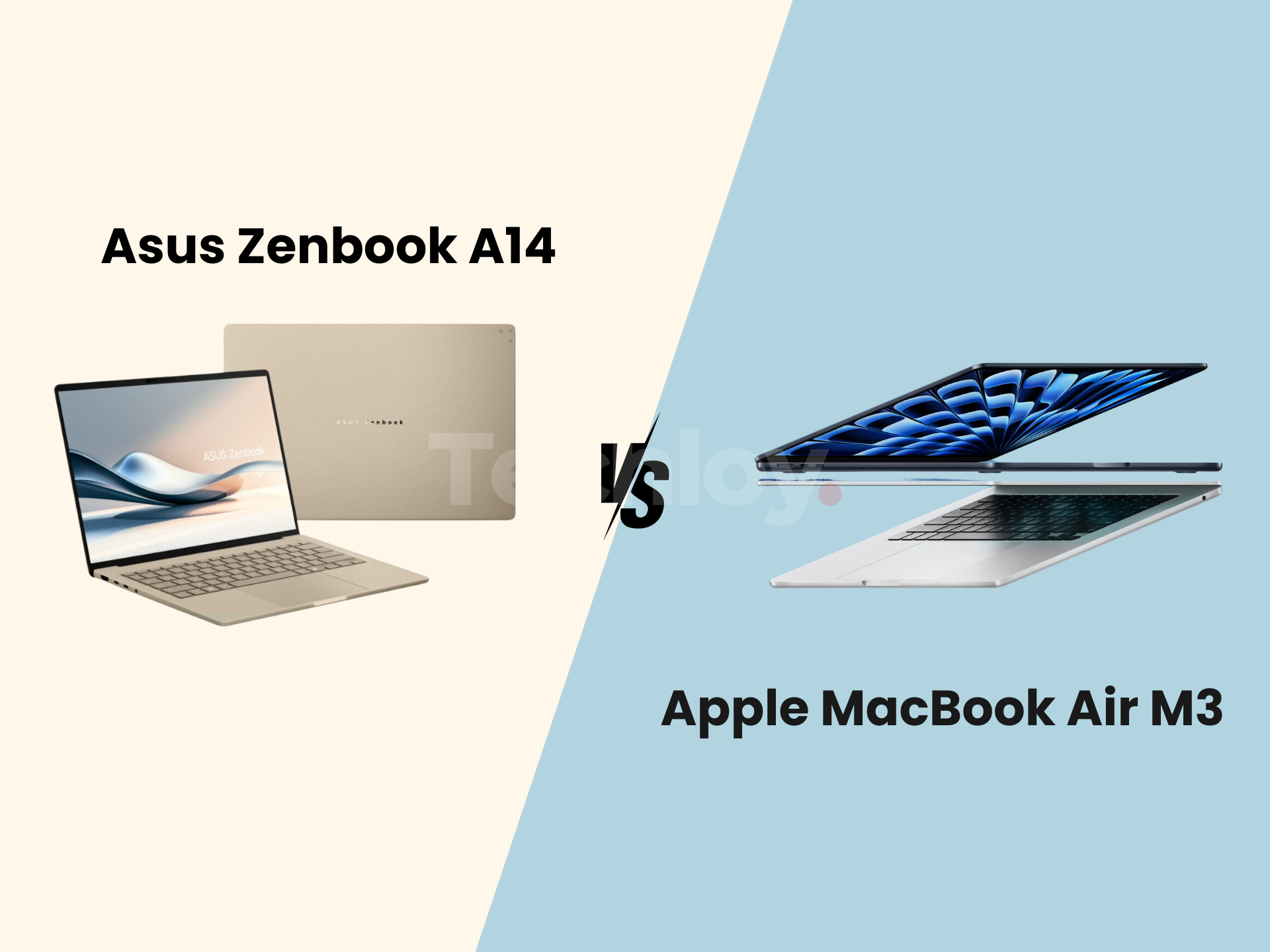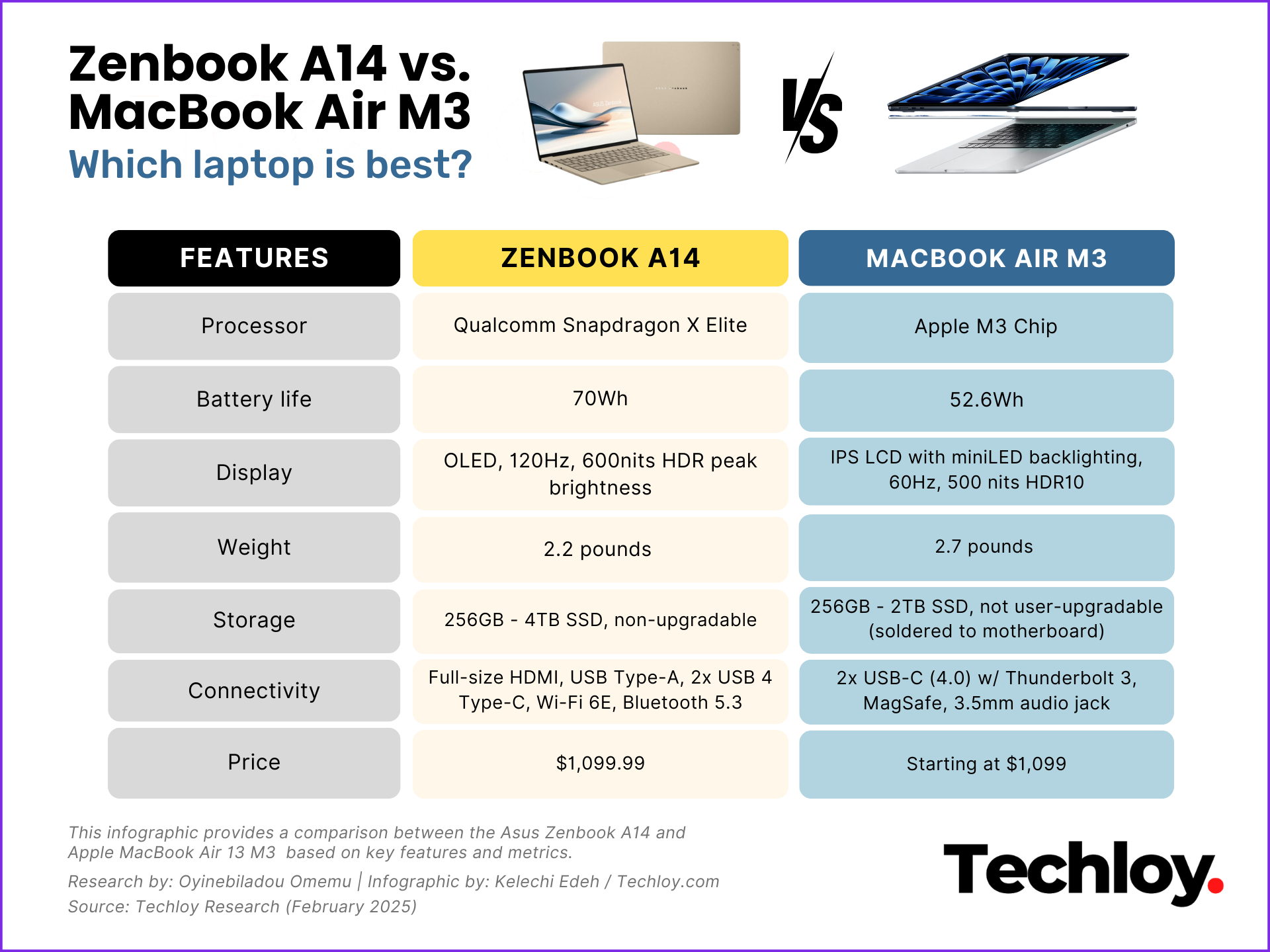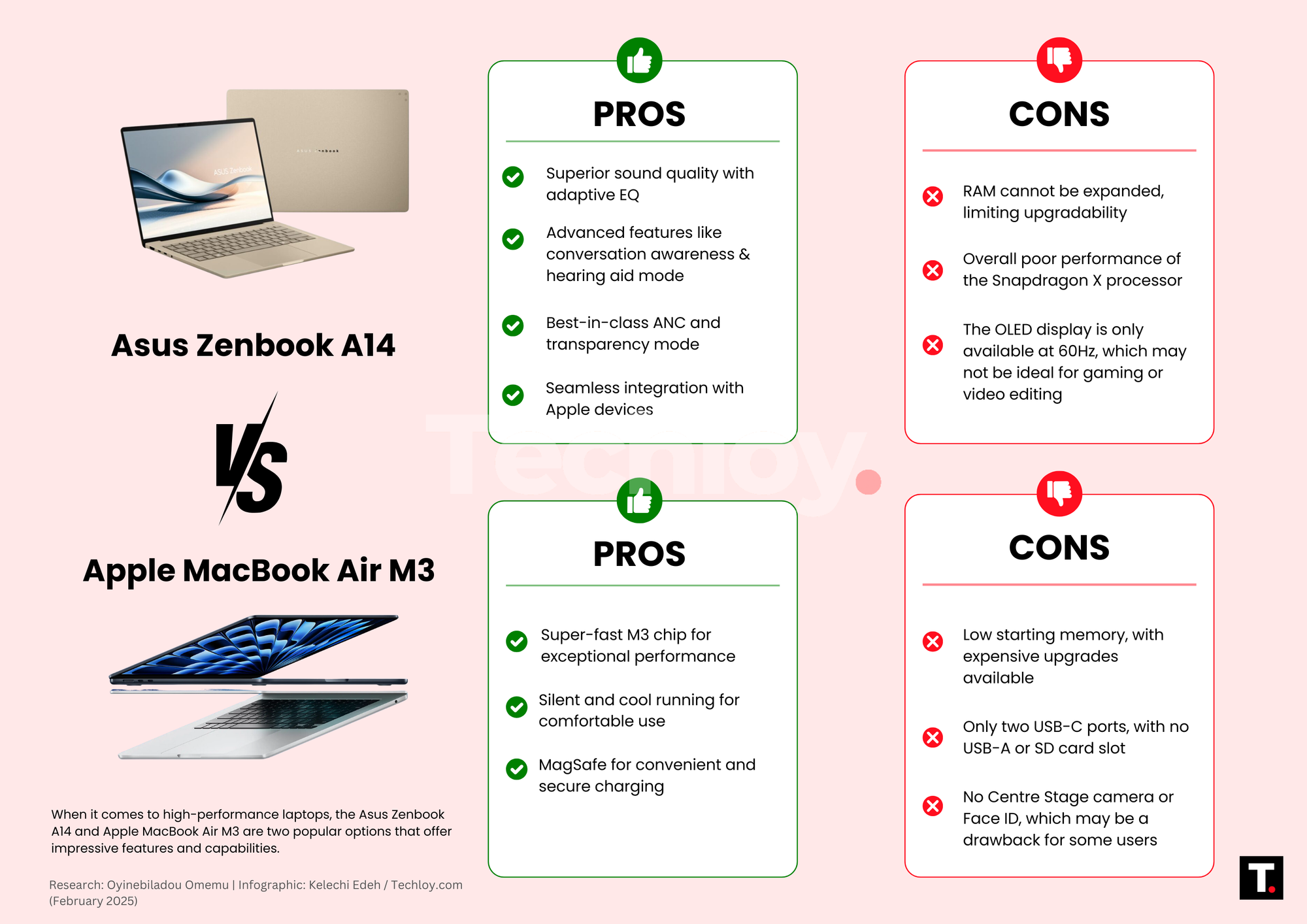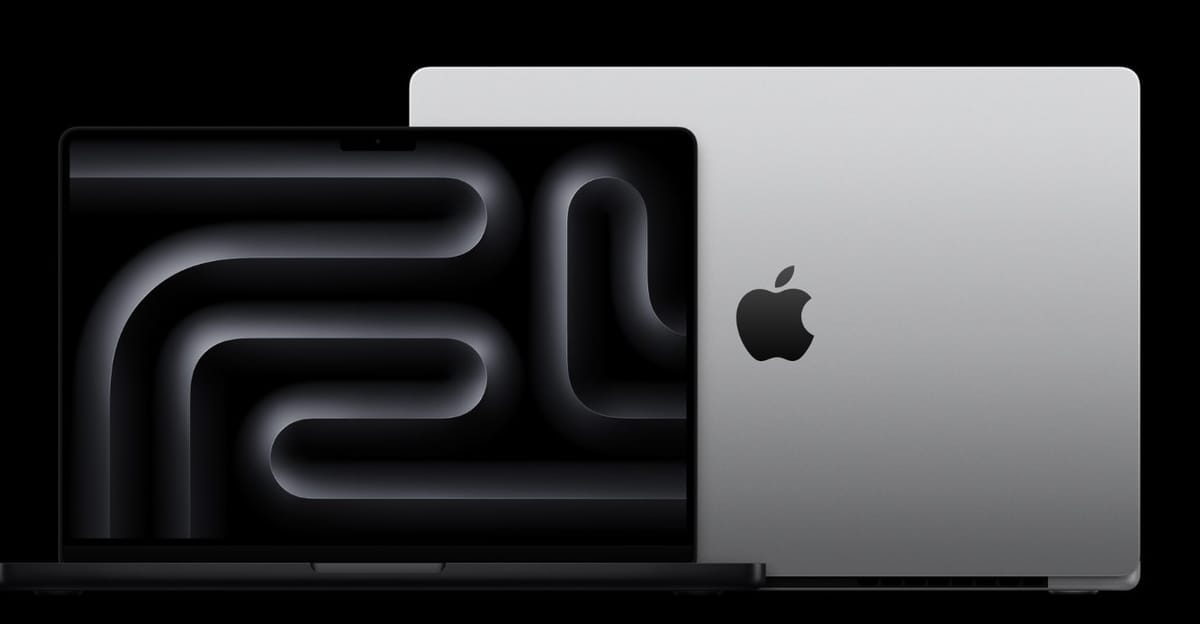INFOGRAPHIC: Asus Zenbook A14 vs Apple MacBook Air 13 M3 — Which laptop is best?
Compare the Asus Zenbook A14 and Apple MacBook Air M3 to determine which model aligns with your priorities and delivers the greatest value for your investment.

Laptops have become an essential tool for students, professionals, and everyday users. When it comes to high-performance laptops, the Asus Zenbook A14 and Apple MacBook Air M3 are two popular options that offer impressive features and capabilities. But how do they stack up against each other?
In this comparison, we'll dive into the key features and differences between the Asus Zenbook A14 and Apple MacBook Air M3, helping you decide which model best fits your needs and preferences. Whether you prioritize processing power, battery life, display quality, or design, this in-depth comparison will guide you in making an informed decision.
How Asus Zenbook A14 vs MacBook Air 13 M3 compare with each other
1/ Processor
- The Asus Zenbook A14 is powered by a Qualcomm Snapdragon X Elite processor, running Windows 11 on Arm, and features a neural processing unit (NPU) driving 45 trillion AI operations per second (TOPS) for an enhanced Copilot + PC experience, paired with a Qualcomm Snapdragon X Elite Adreno GPU that handles graphics tasks with ease and supports up to 32GB of RAM and 1000GB SSD storage.
- The Apple MacBook Air M3, on the other hand, has a slight edge in terms of CPU and GPU performance, featuring an Apple M3 chip with an 8-core CPU, 8-core to 10-core GPU, and a 16-core Neural Engine, providing a strong balance of performance and efficiency, with hardware-accelerated ray tracing and 100GB/s memory bandwidth.
2/ Storage
- The Asus Zenbook A14 offers storage options ranging from 256GB to 4TB, with SSD storage for fast access and loading times. However, the storage is not upgradable.
- The Apple MacBook Air M3 also features storage options from 256GB to 2TB, with fast SSD storage for optimal performance. The storage is soldered to the motherboard and is not user-upgradable.
3/ Battery Life
- The Asus Zenbook A14 has a clear advantage in terms of battery life, with a 70Wh battery that lasts up to 32 hours for productivity or leisure, making it an excellent choice for users who need a laptop that can keep up with their busy lifestyle.
- The MacBook Air M3's 52.6-watt-hour battery provides up to 15 hours of wireless web access and up to 18 hours of Apple TV app movie playback, offering a decent battery life but falling short of the Asus Zenbook A14's impressive endurance.

4/ Display
- The Asus Zenbook A14 boasts an impressive OLED screen with a 120Hz refresh rate, 600nits HDR peak brightness, and a 1,000,000:1 contrast ratio, providing vibrant and detailed visuals that give it a clear edge over its competitor.
- The MacBook Air M3 features an IPS LCD with miniLED backlighting, a 60Hz panel, and a resolution of 2,560 x 1,664 pixels, offering a clear and crisp viewing experience, but ultimately falling short of the Asus Zenbook A14's superior OLED display.
5/ Weight
- The Asus Zenbook A14 takes the lead in terms of portability, weighing in at just 2.2 pounds, thanks to its innovative Ceraluminum material.
- In contrast, the MacBook Air M3 tips the scales at 2.7 pounds, making the Zenbook A14 a significantly more lightweight option.
6/ Design
- The Asus Zenbook A14 boasts a sleek and durable design, featuring a Ceraluminum finish that provides a ceramic-like feel and matte finish while resisting scratches and scuffs, giving it a premium look and feel.
- The Apple MacBook Air M3, on the other hand, features a sturdy unibody aluminum chassis that looks great and feels good to hold, with a smooth-gliding hinge that allows for easy one-handed opening.
7/ Connectivity
- The Asus Zenbook A14 offers a useful selection of ports, including a full-size HDMI, USB Type-A, two USB 4 Type-C ports, and Wi-Fi 6E, making it easy to connect to projectors, external storage, and more, with Bluetooth 5.3 available for wireless connections.
- The Apple MacBook Air M3 has a more limited set of connectivity options, featuring two USB-C ports (4.0) with Thunderbolt 3 support, a MagSafe connection, and a 3.5-mm audio jack, with Wi-Fi 6E and Bluetooth 5.3 available for wireless connections.
8/ Pricing
- The Asus Zenbook A14 starts at $1,099.99, offering a competitive price point for its impressive features and performance.
- The 13-inch MacBook Air starts at $1,099, with various upgrade options available, including a 10-core GPU, additional storage, and more memory, which can quickly drive up the price.

Conclusion
The Asus Zenbook A14 and Apple MacBook Air M3 are both high-performance laptops that cater to different needs and preferences. After comparing their features, it's clear that each laptop has its strengths and weaknesses. The Asus Zenbook A14 outperforms the MacBook Air M3 in terms of portability, with a lighter and more compact design, as well as a more comprehensive range of ports, including USB-A and HDMI.
On the other hand, the Apple MacBook Air M3 excels in terms of processing power, with its M3 chip providing a significant boost in performance and efficiency. Ultimately, the choice between these two laptops depends on your specific needs and priorities. If you value portability and versatility, the Asus Zenbook A14 may be the better choice. However, if you prioritize processing power, the Apple MacBook Air M3 is the way to go.








